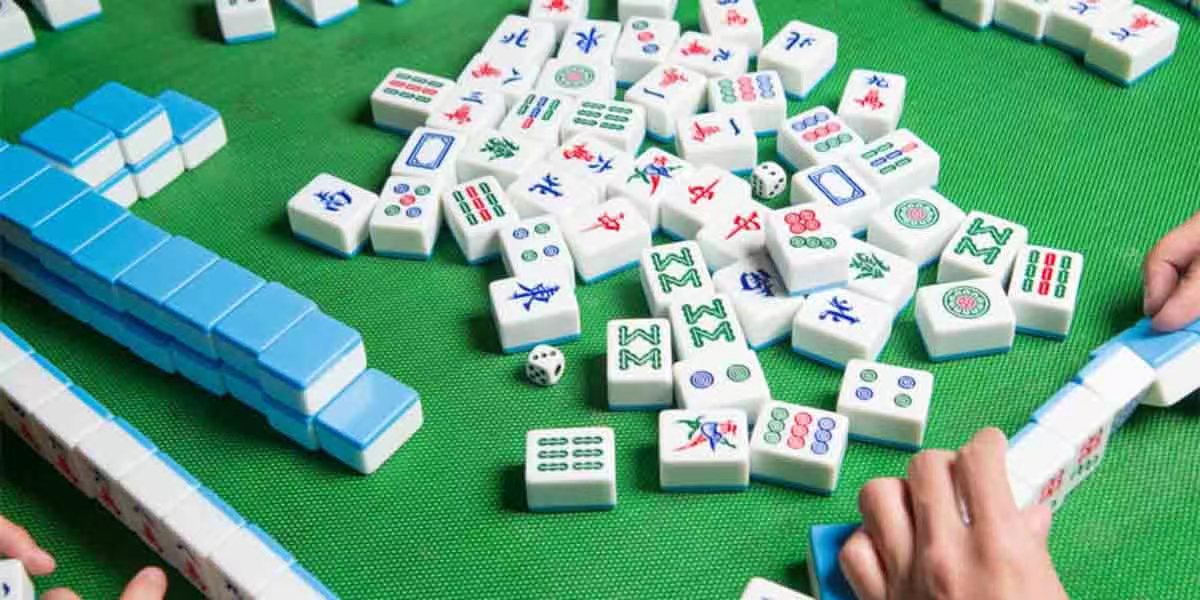Mahjong or Mah-jong is a game of reflection and tactics of Chinese origin. It is played using pieces called tiles on which ideograms and symbols are engraved. Its operation is strongly reminiscent of that of a poker-type card game.
As with many games, the birth of mahjong remains unclear. The game would presumably come from an ancient card game that gradually mutated into a tile game as we know it today.

main theoretical origins of Mahjong
According to Chinese researchers, there is strong evidence that the game originated in the provinces of Jiangsu, Anhui and Zhejiang on the outskirts of Shanghai. This for the simple reason that no trace of the game could be found in other parts of China before 1900.
A theory states that a famous ivory carver from Ningpo in the Zhejiang region is the origin of Mah-jong. The playing cards of the time would thus have been reviewed by the latter in the form of ivory tablets.
Another theory grants the creation of Mahjong to two brothers from Ningpo who would have transposed a deck of cards used for the game of "Matiao" into an ivory and bamboo version around 1870-1880. An enthusiastic magistrate from Zhejiang Province reportedly spearheaded the development of the game by promoting it throughout the region. The similarities between Mah-jong and Ma-tiao suggest that Ma-tiao would be the ancestor of Mah-jong.
Finally, it was underlined that the Chinese term “Pai”simply means“playing a rectangle” without specifying the nature of the object, this same word being used indiscriminately for cards or tiles.There is some evidence that“Pai”games were played either as paper cards or as tiles made from different materials.Mahjong would thus be a simple evolution of game(s) based on cards or tiles.

Distribution throughout Asia
What we know with more certainty is that after 1920 the game quickly spread to different regions of China, gradually becoming the popular game it is today. The Chinese supplemented the game with rules, codes and rituals. These rules and rituals appear for example at the beginning of the game with the methodical construction of walls, the division, and the distribution of tiles, and often vary from one region to another.
All these codes and rituals can sometimes seem a bit obscure or useless for neophytes. This is, however, to avoid a malicious act. Thus, it is important to understand that Mahjong is basically a money game where bets animate the parties. It was therefore essential to avoid cheating.
It was these improvements that gradually (1910-1920) made mahjong an interesting and particularly elegant puzzle game.
It was around 1920 that the diffusion of mahjong began. In Japan, the game also becomes popular after 1920, and after simplification of the rules, the game will know a turning point to become a variant called “Riichi”, more complex and subtle than the traditional Chinese version. In the West, and in particular in the United States, the rules have also been adapted and certain tiles have been added ("joker" tiles).
In 1998 the Chinese government created the Chinese Federation of Mahjong and made it a national sport with official rules. These Chinese rules have been taken over to become the official international rules.

Mahjong, a name story
It was in 1920 that a man named Joseph Park Babcock officially introduced Mahjong on American soil. Mahjong was then known by different names such as "chung fa", "que ma que" or "mah que", the latter being the most common name. Joseph Park Babcock, eager to put his mark on the game will call it "the Mah-jongg" with a double “G”.
"Mah" means "sparrow". A name that had been attributed to this game because of the particular sound produced by the tiles when they are shuffled at the start of the game. Clicks like the chirping of hundreds of hungry sparrows.

Once Mahjong became popular, other companies began to introduce their brand, equipment and books dedicated to the game.Mahjong would therefore have various and varied names before being generically called Mahjong in leaving in passing a“G”forgotten.













